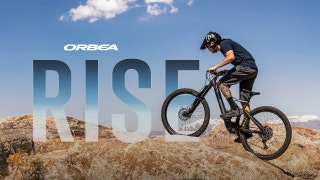Featured Brands
Recommended Products
Get free shipping, on most items, with your $50 purchase today! Same day shipping on most orders if placed by 3pm PST.
PLEASE NOTE:
This offer is only available to physical shipping addresses in the 48 continental United States (no PO Boxes), and some exclusions apply.
Oversize Charges
Some large and/or heavy items are subject to additional oversize charges that are separate from standard shipping costs.
Bike Build Process
All bikes are built, tested, tuned, and ready to ride upon shipment. The bike build process typically takes 2-3 days to complete depending on the bike model and the complexity of the build.
Stock Status
Orders for in-stock items placed by 3PM PST usually ship on the same day. Orders that include special-order or backordered items may be subject to shipping delays depending on product availability. Refer to estimated delivery times in cart when selecting shipping options.

Our Gear Advisors are Ready to Help.
Often overlooked and frequently abused, bike chains and the master links that hold them together are undoubtedly one of the most important parts of your bicycle, helping transform the power you put into the pedals into forward propulsion along the road or trail. When working properly, you forget bike chains and master links are even there. But if something goes wrong (say you bend a link) it is immediately the only you think about.
Bike chains are also a more complex component than you may think, possessing more moving parts than any other component on your bike. Indeed, a standard bike chain may have up to 116 links, though you will likely need to cut your bike chain down depending on whether you are using a 9, 10, 11, or 12-speed drivetrain.
A properly cut chain is one that is long enough that it can comfortably be shifted into the largest rear cog and largest front chainring without jamming, but also not be so long that it develops slack when positioned in the smallest chainring and smallest cog. Otherwise your bike will suffer from dreaded chain slap, which can damage your driveside chainstay and be incredibly annoying to listen to. And in case you are curious, the best way to figure out how long your new chain should be is to measure the old one you are taking off your bike.
When choosing a chain, the number one consideration is the “speed” of your drivetrain, be it 10-speed, 11-speed, or the increasingly popular 12-speed drivetrains found on most modern mountain bikes. (These numbers correspond to the number of cogs on your cassette.) Each one necessitates a specific chain due to spatial constraints between cogs and the shape of the teeth on your cassette and chainring(s).
Master Links, which allow you to break apart and reattach your chain without damaging it, as well as more easily deal with trailside repairs, are also specific to the drivetrain for which they are intended for. If you have any questions about bike chains and master links, please give JensonUSA a call. We have Gear Advisors standing by 951-234-7554 ready to assist you.




